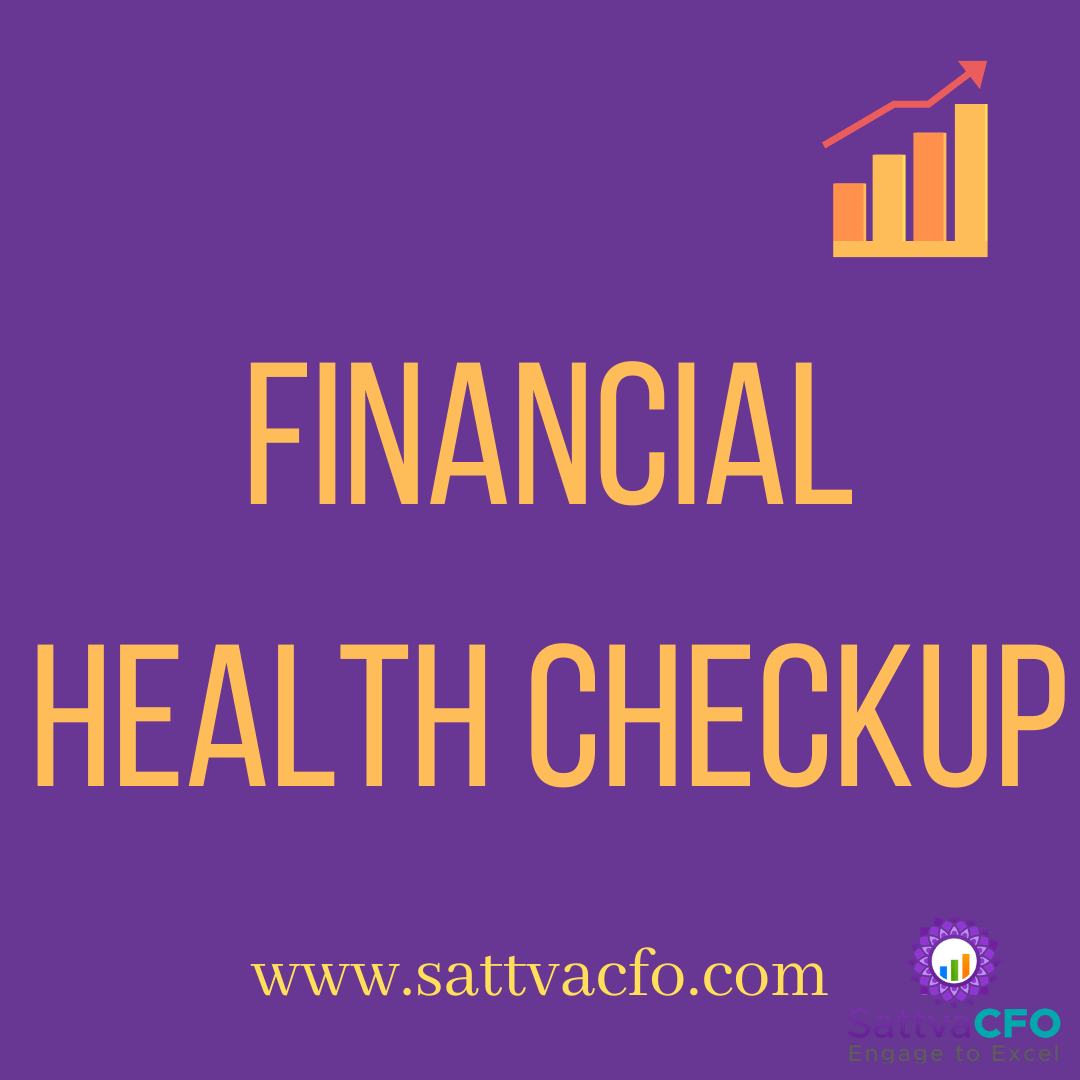In the financial planning process, a financial health check is a first step. Getting a financial health exam is a fantastic way to keep on top of your finances. In a nutshell, a Financial Health Checkup reveals financial deficiencies and outlines ways to address those gaps. quick financial health checkup, internal financial control, accounting health checkup, key performance indicators KPI
What is Financial Health Checkup?
A financial health check is a quick assessment of one’s financial status to evaluate one’s ability to fulfill current financial commitments and readiness for unforeseen financial occurrences. The condition of one’s own financial affairs is referred to as financial health. The amount of money you have in savings, how much you’re saving for retirement, and how much of your salary you spend on fixed or non-discretionary expenditures are all factors in your financial health.
What services are covered under Financial Health Checkup?
The services covered under Financial Health Checkup are as follows:
Accounting Health checkup
The goal of financial health check services is to monitor economic condition and report regions in order to determine financial health. After analyzing the company’s financial health, recommendations are made to enhance the accounting and finance procedures. Consider accounting as a gauge for assessing the financial health of your company. From precise and comprehensive accounting data, various analyses such as ratio analysis, forecasting, decision making, operational analysis, and so on may be performed.
Tax Compliance Health Checkup
A Tax Health Check ensures that tax implications for a particular period, area of compliance, or transaction are recognized, appropriately handled, and risk mitigation measures are implemented. Conducting such health checks on a regular basis would aid in the management of tax risks, guarantee proper compliance, improve litigation readiness, and enhance tax positions.
Internal Financial Control
Internal controls are a company’s systems, regulations, and procedures for ensuring the integrity of financial and accounting data, promoting accountability, and preventing fraud. Internal controls may assist increase operational efficiency by increasing the accuracy and timeliness of financial reporting, in addition to complying with laws and regulations and preventing workers from stealing assets or committing fraud.
Accounting Policies & Procedures
Accounting policies are the particular concepts and processes used to produce financial statements that are applied by a company’s management team. Any accounting techniques, measuring systems, and disclosure presentation processes fall under this category.
Key Performance Indicators (KPI)
A Key Performance Indicator is a quantifiable statistic that shows how well a firm is accomplishing key businesshttps://sattvacfo.com/key-kpis-for-small-business-budget/ goals. Organizations use KPIs at various levels to assess their progress toward their goals. Low-level KPIs may concentrate on procedures in departments such as sales, marketing, HR, support, and others, whereas high-level KPIs may focus on the overall success of the company.
What is the process to conduct financial health checkup?
The process to conduct financial health checkup are as follows:
- Collate data
- Calculate Financial Ratio’s
- Deliver insights
What are the best measures of Company’s Financial Health?
The best measures of Company’s Financial Health are as follows:
- Liquidity Ratio
- Solvency Ratio
- Operating Efficiency
- Profitability Ratio
- The Bottom Line
- The Top Line
- Cash Flow
- Leverage
FAQ’s on Financial Health Checkup
What is Financial Literacy?
Financial literacy refers to the capacity to comprehend and use a variety of financial concepts and abilities, such as budgeting, investing, etc.
What is Debt Avalanche?
A debt avalanche is a kind of debt payback plan that allows you to pay off your debt faster. In essence, a debtor sets aside enough money to make the minimum payment on each obligation, then commits any leftover repayment funds to the debt with the highest interest rate. Once the debt with the highest interest rate is completely paid off, the excess payback amounts go toward the next-highest interest-bearing loan, according to the debt avalanche method. This cycle will continue until all debts have been paid off.
What’s a SMART KPI?
The SMART criterion may be used to assess the relevance of a performance indicator. Specific, Measurable, Attainable, Relevant, and Time-bound are the most common interpretations of the letters. To put it another way:
- Do you have a specific goal in mind?
- Is it possible to track your progress toward that goal?
- Is the objective feasible to achieve?
- How important is the objective to your company?
- When do you think you’ll be able to achieve this goal?
How SattvaCFO can support Financial Health Checkup?
SattvaCFO provides support to conduct Financial Health Checkup, Forensic Services, . Please connect with us.
Also read




